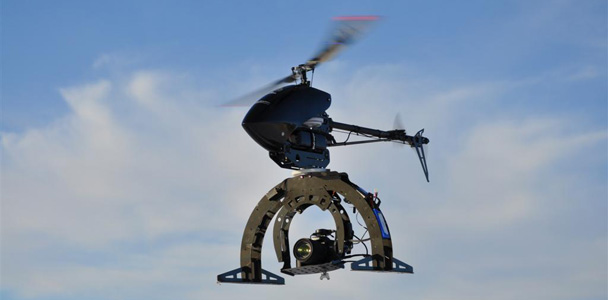
Two Unmanned Aerial System (UAS) have been acquired by the RCMP D Division.
The RCMP D Division Traffic Services and the RCMP Forensic Identification have a new investigative tool aimed at improving effectiveness and efficiencies in conducting investigations.
Two Unmanned Aerial System (UAS) have been acquired by the RCMP D Division. The Units are currently utilized for aerial photography of motor vehicle collision scenes and crime scenes. One UAS is located with the Dauphin Forensic Identification Section and the other with the RCMP Traffic Services Collision Reconstructionist program in Brandon.
The Units are comprised of three primary components, the unmanned aerial vehicle (UAV), the payload and the base station. Together the systems integrate to provide a flexible platform for aerial photography and video. Not to be confused with a drone, the Unit is controlled by a trained pilot assisted by a payload operator and a safety officer from the ground.
The UAS give the RCMP expanded technological capabilities. It is another investigative tool for documenting evidence and reduces risk to the public, police officers and other first responders in certain situations. For example, by deploying the UAS over a spill the Commander can determine the extent of the spill, direction of flow and contamination, determine appropriate areas for entry and exit as well as locate casualties – all without sending in a human to undertake this extremely dangerous task.
The RCMP has acquired a Special Flight Operations Certificate from Transport Canada under the Canadian Aviation Regulations to operate the Units under strict regulations.
The UAS will allow officers at scenes to get information in real time from a different perspective, much closer in scope than an aircraft could ever provide and at a much cheaper cost.
The cost of an Unmanned Aerial System ranges depending upon its configuration to a maximum cost of about $30,000.
While its current use is focused on fatal and serious collisions along with crime scene examinations, other uses could include search and rescue, major event planning, environmental disaster response, suspicious object identification, and underwater recovery in clear shallow water.



